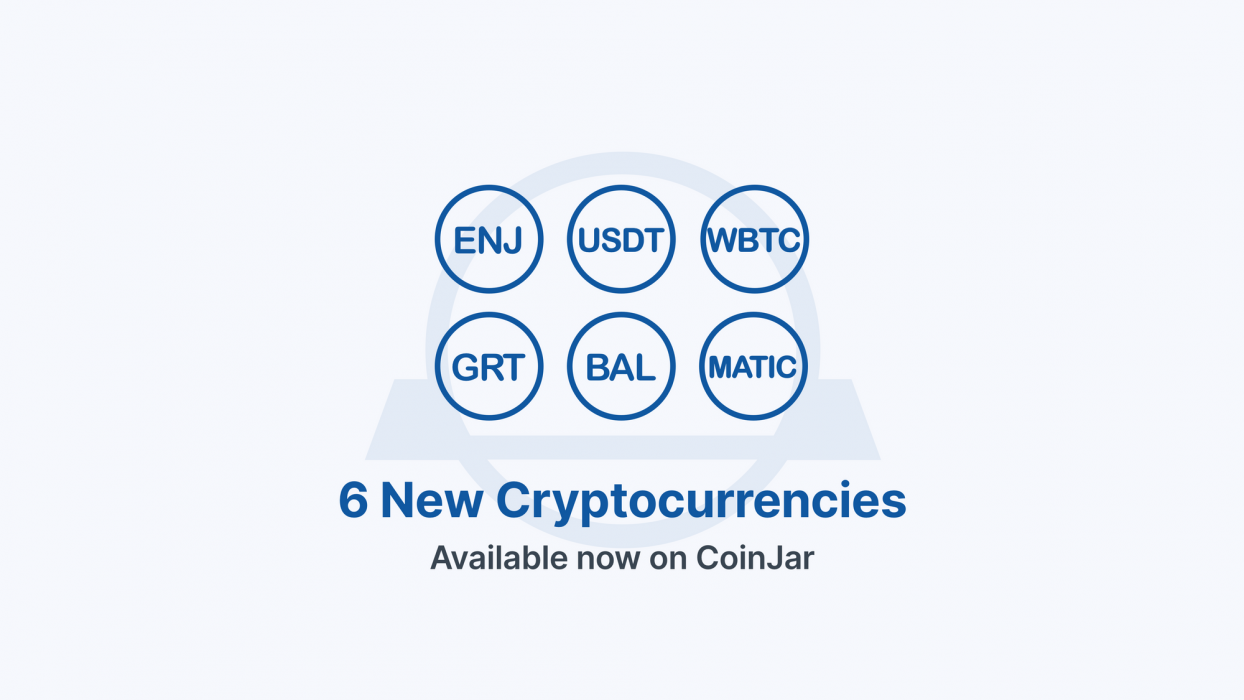
CoinJar has added more cryptocurrencies to their platforms allowing their users to buy, sell and trade more of the most popular coins.
Announced on 23 June, you’ll be able to buy and sell all of these coins on CoinJar, joining the 24 cryptocurrencies that our customers can already trade, store and send.
These tokens won’t initially be available for purchase through CoinJar Bundles or on CoinJar Exchange, but will be added in the near future.
Update your CoinJar app to get access to the full available range.
About The New Coins
Balancer (BAL) is an automated market maker (AMM) built on the Ethereum blockchain, similar to Uniswap and Curve. Users earn the BAL token by creating and maintaining liquidity pools. BAL tokens are governance tokens, meaning that they give holders the right to take part in decisions regarding the network. As these decisions often involve rewards and fees being generated by the Balancer protocol, there’s a financial incentive to hold and participate.
Enjin (ENJ) has been one of the pioneers of non-fungible tokens (NFTs). NFTs are one-of-a-kind markers that allow the holder to prove absolute ownership of a digital asset. Through a process known as minting, Enjin makes it easy to create NFTs on the Ethereum blockchain. ENJ is the currency that powers this process, allowing holders to both mint and “melt” NFTs.
The Graph (GRT) describes itself as “a protocol for organizing blockchain data and making it easily accessible”, a designation that has also led to it being called the Google of blockchain. Put simply, The Graph creates an open marketplace where information from different blockchains can be sold to developers who may require it to power their own smart contracts. The Graph Token (GRT) is the currency that powers this marketplace, offering incentives for those that index, curate and sell the data.
Polygon/Matic (MATIC) is a fast, cross-blockchain dApp development platform built on Ethereum. Like the ETH token, MATIC is the fuel that powers the Polygon network, facilitating the payment and settlement of transactions. Polygon uses a Proof-of-Stake consensus mechanism, which means that holders of the token can “stake” their tokens and receive more MATIC in return.
Tether (USDT) is the original stablecoin. Pegged in value to the US dollar, Tether allowed people to buy and sell cryptocurrency at a time when it was difficult for exchanges to find reliable banking and fiat currency partners. Cut to 2021 and the stablecoin market is booming, with more than US$100 billion in circulation. But Tether remains the biggest player by far, accounting for more than 60% of the market and essentially functioning as the crypto world’s reserve currency.
Wrapped BTC (WBTC) is an invention of the DeFi movement. Pegged to the same value as Bitcoin itself, WBTC is a way of representing Bitcoin ownership on the Ethereum network (i.e. you lock Bitcoin in a smart contract and receive an equivalent amount of WBTC in return). Having WBTC means you can use the Bitcoin you own on DeFi apps, for instance to purchase tokens on Uniswap or as liquidity pool collateral on a platform like Compound or Balancer.
If you want to get started, check out our guide on How to Setup a Bitcoin Account with CoinJar.
Disclaimer:
The content and views expressed in the articles are those of the original authors own and are not necessarily the views of Crypto News. We do actively check all our content for accuracy to help protect our readers. This article content and links to external third-parties is included for information and entertainment purposes. It is not financial advice. Please do your own research before participating.
Credit: Source link





















